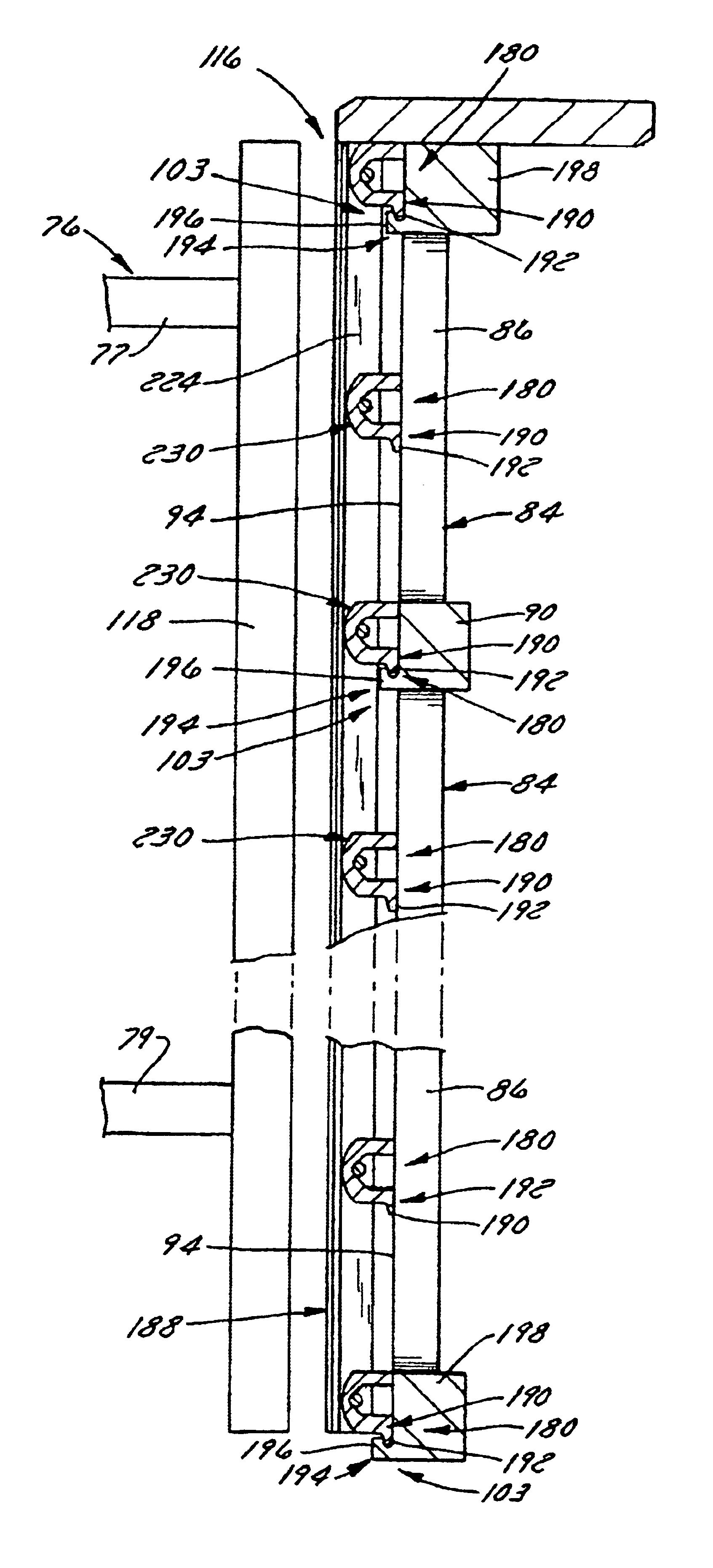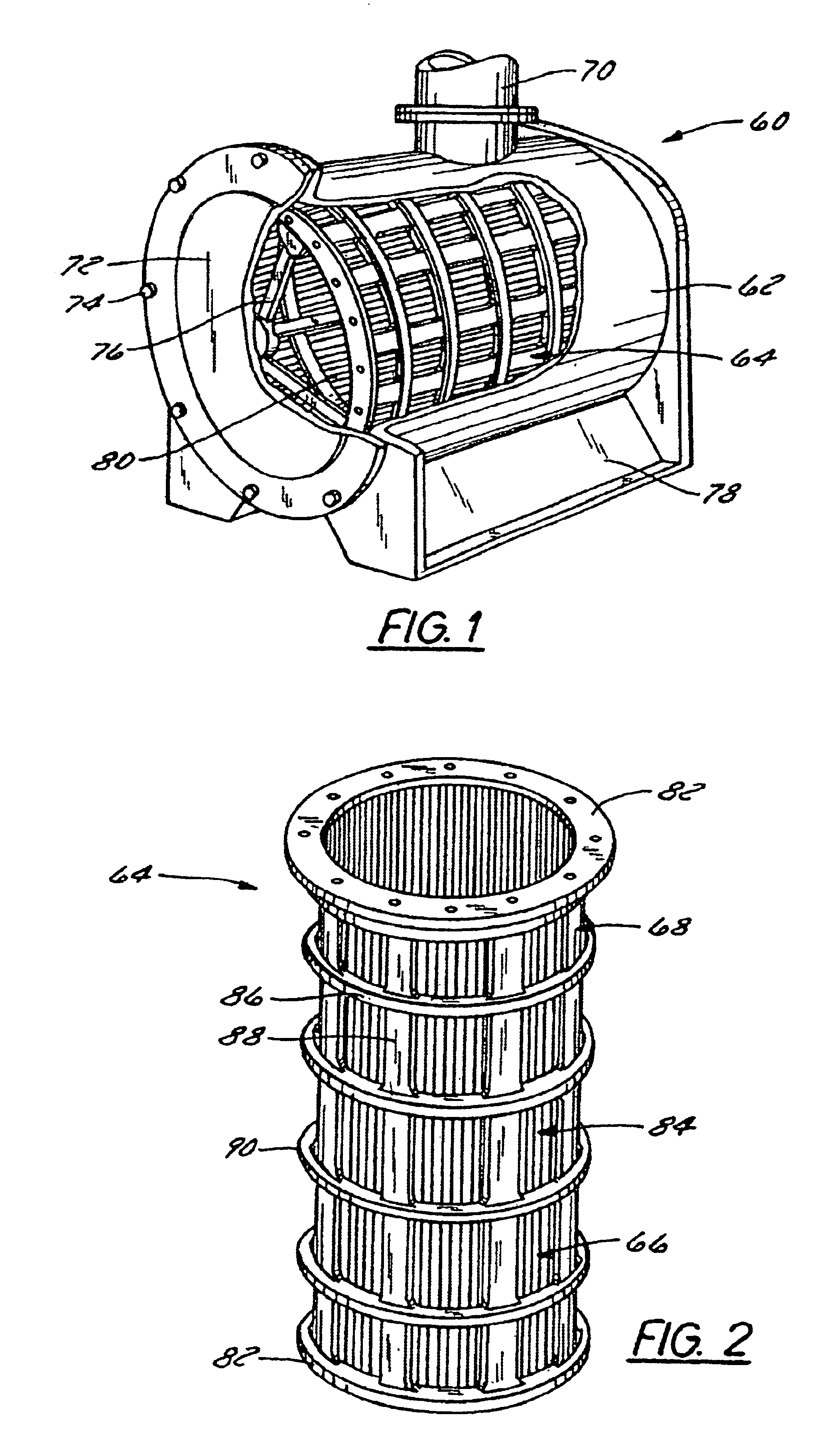Screen cylinder and method
a technology of screen cylinder and cylinder head, which is applied in the direction of moving filter element filter, separation process, filtration separation, etc., can solve the problems of screen plate premature failure, time-consuming, labor-intensive, screen plate cracking, etc., and achieves the effect of less cross section, more wear resistance, and compact structur
- Summary
- Abstract
- Description
- Claims
- Application Information
AI Technical Summary
Benefits of technology
Problems solved by technology
Method used
Image
Examples
Embodiment Construction
[0085]FIG. 1 illustrates a screening apparatus 60 that has a housing 62 and a screen cylinder assembly 64 disposed in the housing 62. As is shown in more detail in FIG. 2, the screen cylinder 64 is comprised of a perforate screen media 66 disposed in a perforate frame 68. The apparatus 60 has an inlet (not shown), through which slurry passes, and an outlet 70, from which filtrate exits. Typically, the apparatus 60 also has a contaminant discharge (not shown), through which filtered or rejected material is removed. So that maintenance can be performed, including removal of the screen cylinder 64, the apparatus 60 typically includes a cover 72 attached to the housing 62, such as by fasteners 74. A rotor 76 can be and preferably is disposed inside the screening apparatus 60. Typically, the rotor 76 is disposed inside the screen media 66, but other arrangements are possible. The housing 62 of the screening apparatus 60 shown in FIG. 1 rests upon a pedestal 78 that spaces the apparatus 6...
PUM
| Property | Measurement | Unit |
|---|---|---|
| weight ratio | aaaaa | aaaaa |
| weight ratio | aaaaa | aaaaa |
| angle | aaaaa | aaaaa |
Abstract
Description
Claims
Application Information
 Login to View More
Login to View More - R&D
- Intellectual Property
- Life Sciences
- Materials
- Tech Scout
- Unparalleled Data Quality
- Higher Quality Content
- 60% Fewer Hallucinations
Browse by: Latest US Patents, China's latest patents, Technical Efficacy Thesaurus, Application Domain, Technology Topic, Popular Technical Reports.
© 2025 PatSnap. All rights reserved.Legal|Privacy policy|Modern Slavery Act Transparency Statement|Sitemap|About US| Contact US: help@patsnap.com



